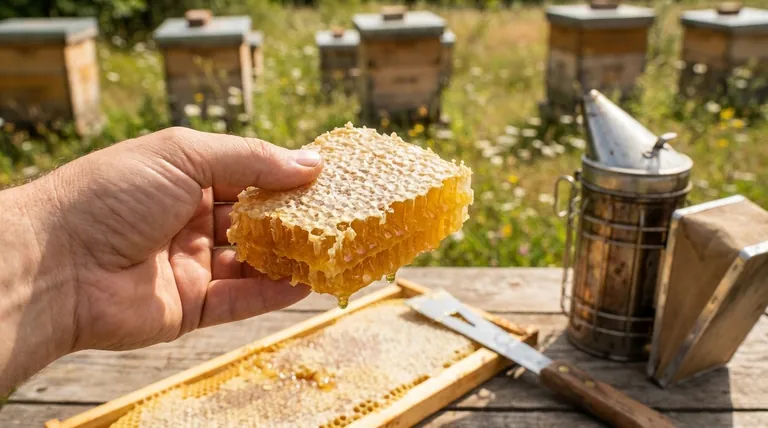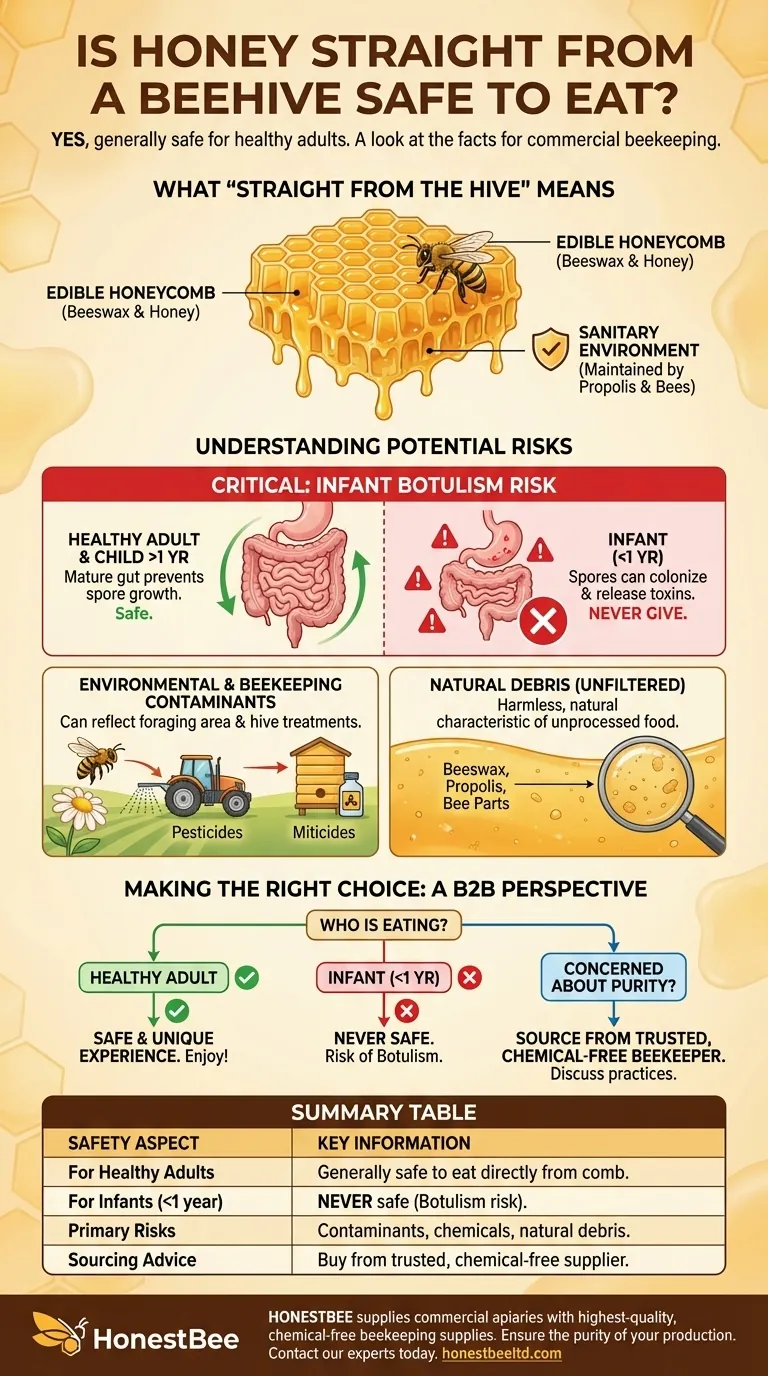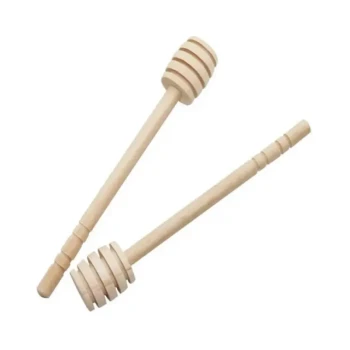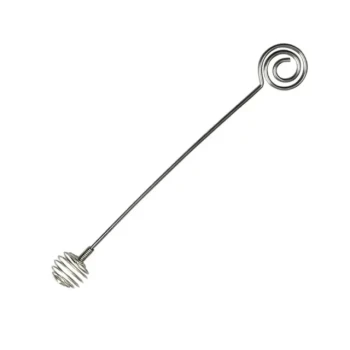Yes, for a healthy adult, honey straight from a beehive is generally safe to eat. You can consume the honey directly from the honeycomb, as both the honey and the beeswax comb are edible. The inside of a beehive is a remarkably sanitary environment maintained by the bees themselves.
The core issue isn't the honey's natural state but what it might contain from the outside world. While pure, raw honey is safe for most, the primary risks involve potential environmental contaminants and the natural presence of bacteria that pose a serious threat to infants.

What "Straight from the Hive" Really Means
When we talk about eating honey directly from a hive, it's important to understand what you're consuming. It's more than just the liquid honey you see in a jar.
The Honeycomb Structure
Honey is stored by bees in hexagonal cells made of beeswax. This comb is entirely edible, though its waxy texture isn't for everyone.
Eating a chunk of honeycomb provides both the honey and the comb itself. Many people enjoy it as a complete, natural product.
The Sanitary Nature of the Hive
A beehive is not a dirty place. Bees are meticulous and use a substance called propolis (a resinous mixture) to seal cracks and sterilize the hive, leveraging its antimicrobial properties.
This internal cleanliness is why the honey and comb are considered sanitary and safe for immediate consumption.
Understanding the Potential Risks
While honey is a natural product, "unprocessed" means it hasn't been treated to remove potential hazards. The risks are low for healthy adults but are critical to understand.
The Serious Risk of Infant Botulism
Raw honey can contain spores of a bacterium called Clostridium botulinum. These spores are harmless to adults and children over one year old because their mature digestive systems can prevent the spores from growing.
In an infant's undeveloped gut, these spores can colonize and release a toxin that causes infant botulism, a rare but serious illness. For this reason, honey of any kind—raw or processed—should never be given to children under 12 months of age.
Environmental and Beekeeping Contaminants
Because bees forage in the wider environment, the honey can reflect what they encounter. This can include pesticides from nearby farms or chemicals used by beekeepers.
Beekeepers sometimes use chemicals (miticides) inside the hive to control Varroa mites, a destructive parasite. Sourcing from a trusted beekeeper who uses chemical-free methods ensures a purer product.
Natural Debris
Unfiltered honey straight from the comb may contain small bits of debris. This can include beeswax, propolis, and occasionally parts of bees. While not harmful, this is a natural characteristic of a completely unprocessed food.
Making the Right Choice
Your decision to eat honey straight from the hive should be based on who is consuming it and your comfort with its unprocessed nature.
- If you are a healthy adult: Enjoying honey straight from the comb is a safe and unique experience.
- If you are serving a child under one year old: Do not give them honey in any form, raw or processed, due to the risk of infant botulism.
- If you are concerned about purity: Source your honeycomb from a trusted, local beekeeper who can tell you about their pest management practices and the local foraging environment.
Ultimately, eating honey directly from its source is a safe and natural way to enjoy it, provided you are mindful of these critical considerations.
Summary Table:
| Safety Aspect | Key Information |
|---|---|
| For Healthy Adults | Generally safe to eat directly from the honeycomb. |
| For Infants (<1 year) | Never safe due to risk of infant botulism. |
| Primary Risks | Environmental contaminants, beekeeping chemicals, natural debris. |
| Sourcing Advice | Buy from a trusted beekeeper who uses chemical-free methods. |
HONESTBEE supplies commercial apiaries and beekeeping equipment distributors with the highest-quality, chemical-free beekeeping supplies and equipment. Ensure the purity and safety of your honey production with our wholesale-focused operations. Contact our experts today to discuss how our products can support your beekeeping success.
Visual Guide

Related Products
- Precision Honey Refractometer Instrument for Quality Assessment
- Easy Use Manual Stainless Steel Honey Press for Honey Comb
- Natural Wood Honey Dipper for Tea Coffee and Desserts
- Modern Stainless Steel Honey Dipper Stirrer
- 10L Stainless Steel Electric Honey Press Machine
People Also Ask
- Why is a honey refractometer considered essential for commercial beekeepers? Ensure Honey Quality and Profitability
- What is a honey refractometer and what is its purpose? Ensure Honey Quality and Prevent Spoilage
- What are the features of the Standard Refractometer for honey moisture content? Essential Tools for Quality Control
- What is a honey refractometer? The Essential Tool for Perfect Honey Quality
- How does a honey refractometer work? Ensure Honey Quality & Harvest Readiness



















